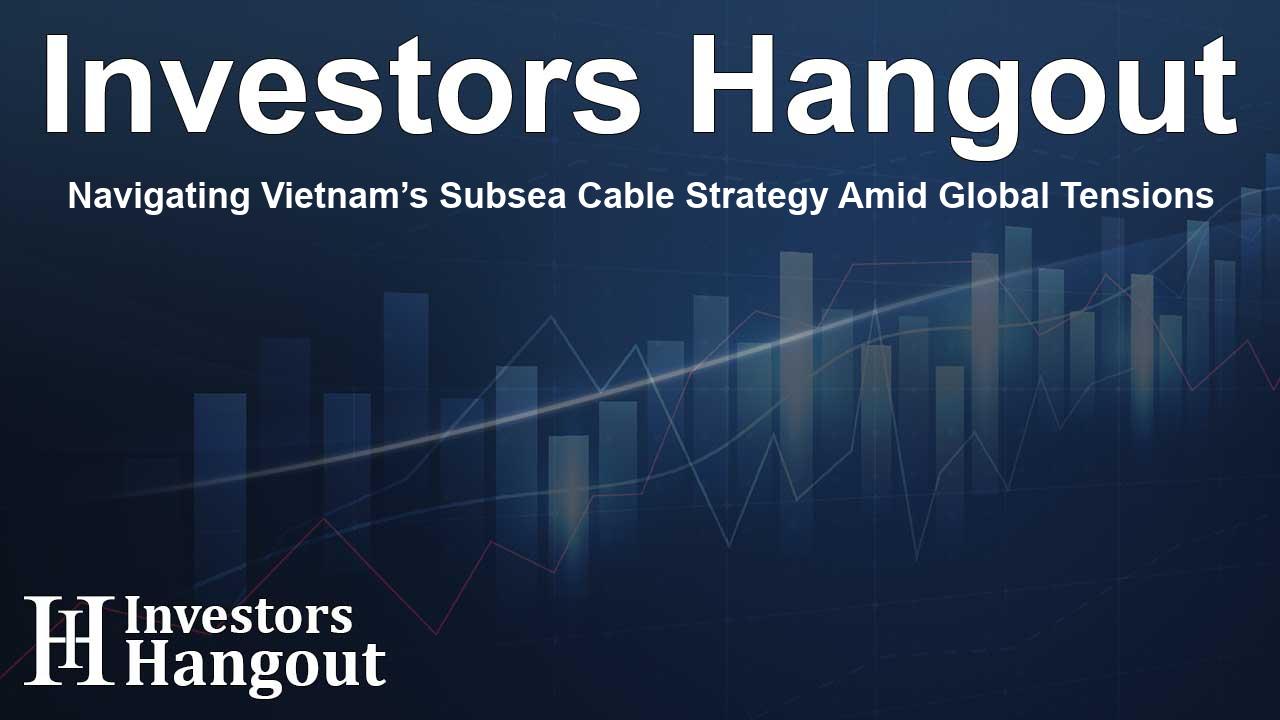Navigating Vietnam’s Subsea Cable Strategy Amid Global Tensions

Understanding Vietnam's Subsea Cable Ambitions
In recent discussions, Vietnam has been urged by the United States to reconsider its partnerships with Chinese cable-laying companies, particularly HMN Technologies. This strategic push is aimed at redefining Vietnam's subsea cable landscape by 2030, amidst the country’s plans to establish 10 new undersea cables.
The Need for New Infrastructure
Vietnam's existing five major subsea connections, which are crucial for linking the country to the global internet, have been plagued by frequent failures. This has highlighted the urgent requirement for new cables, prompting the Vietnamese government to prioritize these developments.
Intense Diplomatic Engagements
Since the beginning of the year, U.S. officials have engaged in numerous meetings, estimated to number over six, with both Vietnamese leaders and international business figures. These sessions are fundamentally focused on shaping Vietnam's cable strategy, emphasizing the need for caution regarding partnerships with Chinese enterprises.
The Geopolitical Context
The ongoing rivalry between the U.S. and China extends into Vietnam, where both nations are competing for influence. With leaders such as U.S. President Joe Biden making reciprocal visits with Chinese President Xi Jinping, the stakes are high. The discussions surrounding subsea cables are not merely technical; they also represent a broader struggle for power in the region.
The Importance of Secure Information Routes
Subsea cables are responsible for transmitting an immense amount of global data, making them vital in the context of the technology contest between the U.S. and China. Washington has previously taken steps to exclude HMN Technologies from significant projects due to national security concerns linked to the potential for espionage.
The Role of APTelecom
Guiding these discussions is APTelecom, a consultancy that has become influential in persuading Vietnam to adopt a cautious approach toward Chinese cable-laying companies. Their involvement has not been broadly recognized prior to this reporting, suggesting that APTelecom is actively working to shape the decision-making landscape for Vietnam's subsea strategy.
Experience Matters
U.S. officials have pointed out that selecting less experienced contractors, such as HMN Technologies, could hinder U.S. investment in Vietnam. With prominent competitors in the market having decades of experience including America's SubCom and Japan's NEC, it is crucial that Vietnam assesses the long-term implications of its partnerships.
Concerns of Sabotage and Infrastructure Failures
Vietnam’s existing undersea cable systems have rushed to contend with significant outages throughout early 2023, raising concerns about the resilience of their infrastructure. U.S. officials have raised alarms about possible sabotage, sharing satellite images that suggest deliberate disruptions, although Vietnamese authorities claim they haven't concluded definitively on the matter.
A Competitive Landscape
In light of recent developments, Vietnam's leading private telecommunications company, FPT, intends to invest in a cable linked to an international network planned by HMN Technologies. However, the anticipated progress on this collaboration remains uncertain. Meanwhile, Vietnam’s other state-owned telecommunications company, Viettel, has partnered with Singapore's Singtel, forging plans for a new cable that circumvents portions of the contentious South China Sea.
Looking Ahead
The future of Vietnam's subsea cable infrastructure is still unfolding amidst these intricate negotiations and geopolitical tensions. Industry experts are watching closely, recognizing that the decisions made in the coming months will significantly shape Vietnam's role as a digital hub in Southeast Asia.
Frequently Asked Questions
What is the U.S. request to Vietnam regarding subsea cables?
The U.S. is urging Vietnam to avoid using Chinese firms like HMN Technologies in developing its new subsea cables to ensure security and reliability.
Why does Vietnam need new subsea cables?
Vietnam's current subsea connections are aging and have suffered repeated failures, necessitating upgrades to meet growing internet demands.
Who is APTelecom and what role are they playing?
APTelecom is a consultancy engaged in discussions with Vietnam to steer them away from choosing Chinese cable-laying companies, focusing instead on partnerships with more established firms.
Are there concerns about sabotage affecting Vietnam's submarine cables?
Yes, U.S. officials have suggested that outages may be linked to sabotage, although Vietnamese authorities have not confirmed this.
How is the geopolitical rivalry impacting Vietnam's telecommunication strategy?
The ongoing U.S.-China rivalry influences Vietnam's choices in technology partners, as the country navigates offers from both nations amidst concerns over security and reliability.
About Investors Hangout
Investors Hangout is a leading online stock forum for financial discussion and learning, offering a wide range of free tools and resources. It draws in traders of all levels, who exchange market knowledge, investigate trading tactics, and keep an eye on industry developments in real time. Featuring financial articles, stock message boards, quotes, charts, company profiles, and live news updates. Through cooperative learning and a wealth of informational resources, it helps users from novices creating their first portfolios to experts honing their techniques. Join Investors Hangout today: https://investorshangout.com/
Disclaimer: The content of this article is solely for general informational purposes only; it does not represent legal, financial, or investment advice. Investors Hangout does not offer financial advice; the author is not a licensed financial advisor. Consult a qualified advisor before making any financial or investment decisions based on this article. The author's interpretation of publicly available data shapes the opinions presented here; as a result, they should not be taken as advice to purchase, sell, or hold any securities mentioned or any other investments. The author does not guarantee the accuracy, completeness, or timeliness of any material, providing it "as is." Information and market conditions may change; past performance is not indicative of future outcomes. If any of the material offered here is inaccurate, please contact us for corrections.